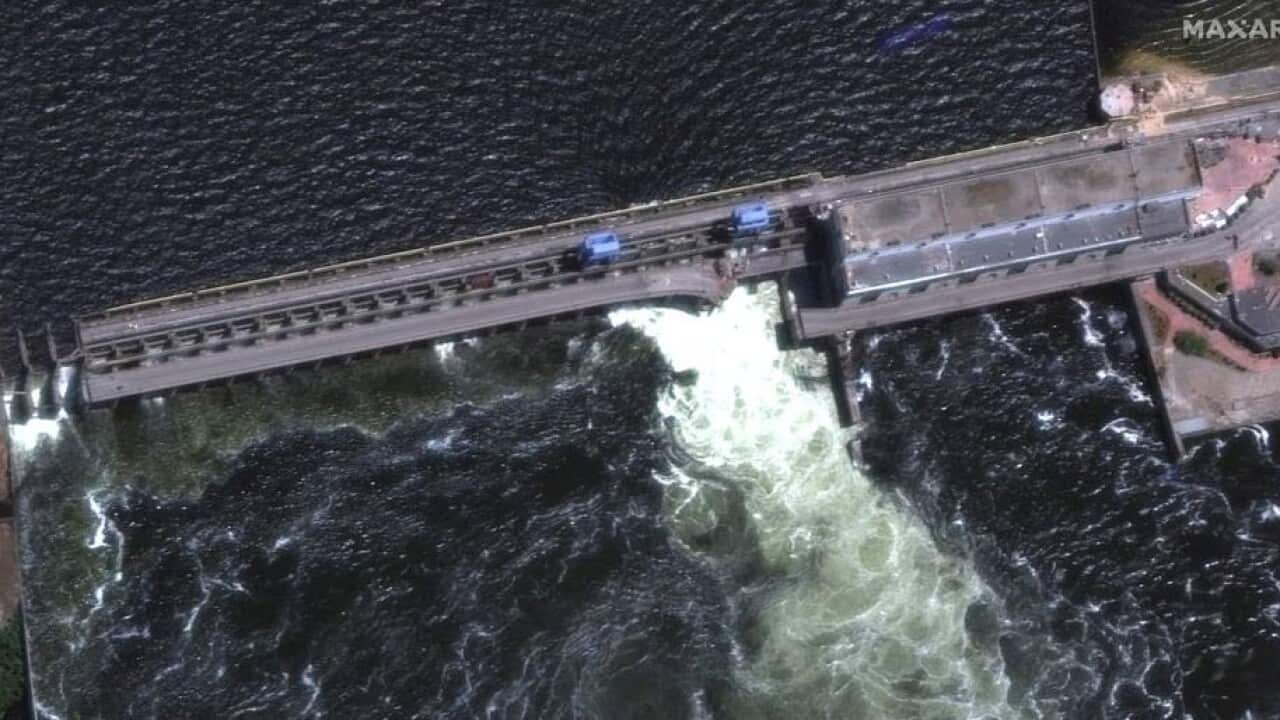Rescuers from volunteer groups cross the flooded streets of southern Kherson in Ukraine, searching for survivors.
Thousands of Ukrainians have been forced to flee their homes as floods sweep across a large area after the destruction of the Kakhovka dam.
The explosion at the hydroelectric dam, which sits on the front line between Russian and Ukrainian forces, has left hundreds of thousands of people without access to drinking water, while the volume of water is expected to flood tens of thousands of acres of farmland.
The enormous Kakhovka dam, which spans frontlines across the Dnipro river in southern Ukraine, has been blown up.The flooding could submerge areas downstream, putting parts of Kherson (controlled by Ukraine) and the nearby Zaporizhzhiya power plant (held by Russia) at risk.
— max seddon (@maxseddon)
Ukraine's Deputy Prime Minister Yuri Vaskov estimates that more than 80 settlements have been affected by the mass floods.
Evacuation and relocation efforts are driving thousands of citizens to move to cities such as Odessa and Kiev.
Vedant Patel, a spokesman for the US State Department, said about 20,000 residents will have to leave their homes.
"This flooding not only puts homes, farms and civilians at risk, but also creates another challenge to maintaining security in and around the Zaporizhzhya nuclear power plant," Mr Patel said.
The now depleted water tanks have so far been used to help cool fuel sources at the Russian-controlled Zaporizhzhya nuclear power plant.
Yury Chernichuk, director of the power plant, said the situation at the nuclear power station is currently stable and that they have enough water to cool the reactors for a few months.
The disaster at the Kakhovka dam affects access to safe drinking water and electricity
Ukrainian President Volodymr Zelenskyy, accused Russia of abandoning the affected citizens within the Moscow-controlled territory and said that relief organisations must be mobilised immediately to save lives.
Mr. Zelenskyy said it is still impossible to determine exactly how many people in the temporarily occupied Kherson region are in danger.
Damian Rance, from the UNICEF department in Ukraine, said the floods were exacerbating the impact of the conflict on displaced children.
Mr Rance explained, that the disaster at the Kakhovka dam affects access to safe drinking water and electricity, and is yet another attack on infrastructure that is vitally important for the well-being of children in Ukraine.
The Ukrainian President described the attack and the consequences of the massive flooding that followed as an 'environmental bomb of mass destruction'.
Video of the destruction to the Kakhovka dam posted on Russian social media.
— max seddon (@maxseddon)
The results of this disaster are already showing up on the banks of the Kahofka reservoir, where thousands of dead fish have been washed up.
An elderly man from the village of Marianske, which lies at the edge of the reservoir, said that the water left so quickly when the dam wall broke, and the fish could not escape from the resulting leakage.
On the Russian side, residents of towns near the border are also feeling the effects of the flooding.





